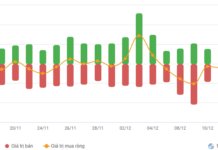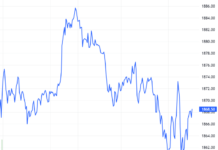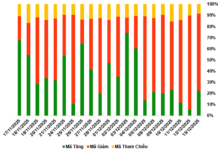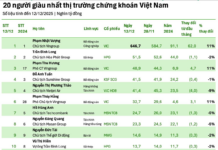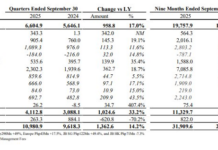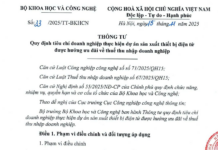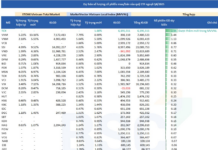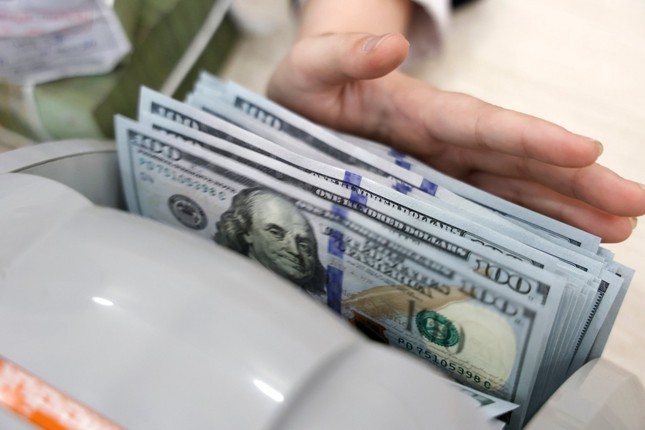
The State Bank takes the second intervention step by selling foreign currencies to the market. Photo: Như Ý
Relieve market sentiment
At the press conference to announce the results of Q1/2024 banking operations on April 19, Deputy Director of the Monetary Policy Department of the SBV – Pham Chi Quang, said that the rapid increase in the USD exchange rate was caused by the international market and domestic demand. In the world, the US dollar index (DXY) has returned to the 106 mark, the first time in 6 months. The reason is that US inflation remains high, which could lead the US Federal Reserve (Fed) to prolong the interest rate cut. This is contrary to investors’ expectations.
Domestically, there is a huge demand for foreign currencies, especially from businesses, such as steel imports. Businesses hedge their risks by increasing their purchase of foreign currencies with terms, leading to a high demand.
According to Quang, the act of selling foreign currencies to credit institutions with negative foreign exchange status to change their status is a very strong measure on behalf of the regulatory authority to ensure the relief of market sentiment. This ensures a stable supply of foreign currencies in the market and fully meets the legitimate foreign currency needs of the economy. “As soon as the SBV announced the move, the market reacted positively, and foreign exchange transactions have dropped below the selling rate of the SBV”, said Quang.
In the time to come, Quang affirmed that the SBV will continue to closely monitor the foreign exchange market and continue implementing measures to stabilize the market in order to ensure the needs of the economy and manage inflation effectively.
SBV Deputy Governor Dao Minh Tu added that the USD exchange rate has been “hot” since the beginning of the year with an increase of 4.9%. This is a noteworthy level. According to Tu, the SBV closely monitors the exchange rate and uses tools such as the central exchange rate to coordinate up and down to ensure supply and demand. The rapid increase in the USD exchange rate is due to objective factors in the world as well as the strong increase in export and import demand in recent times. However, Tu said that compared to many countries and territories in the region, the exchange rate has also fluctuated sharply, such as: Taiwan increased by 5.9%, Thailand by 7.9%… “The SBV’s view is to manage flexibly, how to manage the exchange rate stably but not fix it, avoid the strong impact of the world, create a harmonious balance, and be ready to intervene if it is unfavorable”, said Tu.
Closely following the effects
Independent economic expert Nguyen Duc Hung Linh said that looking back over the years of 2022 and 2023, the SBV has taken 3 steps to control the exchange rate. Step 1, withdraw liquidity through credit bills and other operations. Step 2, sell foreign exchange reserves. Step 3, increase policy interest rates. Currently, the SBV is implementing step 2 of selling foreign currencies. If this step is not enough, the SBV will proceed to step 3.
However, in an interview with PV Tien Phong, economic expert Do Bao Ngoc, Deputy General Director of Vietnam Construction Securities Joint Stock Company, said that currently, the SBV has not raised policy interest rates, but the market has reacted by raising interbank interest rates and some commercial banks increasing by 0.5-1%/year in mobilization interest rates. This has a direct impact on the stock market.
In recent days, the exchange rate has continuously reached new highs. On the afternoon of April 19, Vietcombank listed the USD at 25,133 dong for buying and 25,473 dong for selling, at the prescribed ceiling. Compared to the beginning of the year, the exchange rate has increased by more than 5%.
Ngoc analyzed that in the first quarter, the Vietnamese stock market increased by 10% from expectations of a loosening of monetary policy by the US Federal Reserve (Fed). However, recently, the Fed’s rate cut this year has not been as expected because US inflation has increased again, gold prices, oil prices have increased… Since the beginning of April, the stock markets in the world and Vietnam reversed sharply. In Vietnam, the exchange rate has fluctuated sharply within 1 month. Accordingly, the cash flow began to leave the stock market.
According to Ngoc, the complex geopolitical tensions in the world, the increase in gold prices, and oil prices in the country have led to an increase in the exchange rate. Two weeks ago, the SBV sent out a message that it would sell foreign currencies to intervene in the exchange rate. On April 19, the SBV officially sold foreign currencies.
“However, it is impossible to maintain a low interest rate level when the SBV has sold USD to the market. Recently, interbank interest rates have increased by 4% compared to the beginning of the year. This shows the supply and demand for money in the system. This increase in interest rates is partly aimed at limiting the depreciation of the USD during the current period. The mobilization interest rates of many commercial banks have increased from 0.5-1%/year and may increase further in the coming time”, Ngoc said.
Ngoc predicted that the first 6 months of the year will still be tense in terms of the exchange rate. In the first three weeks of April, the stock market fell by about 10%.


